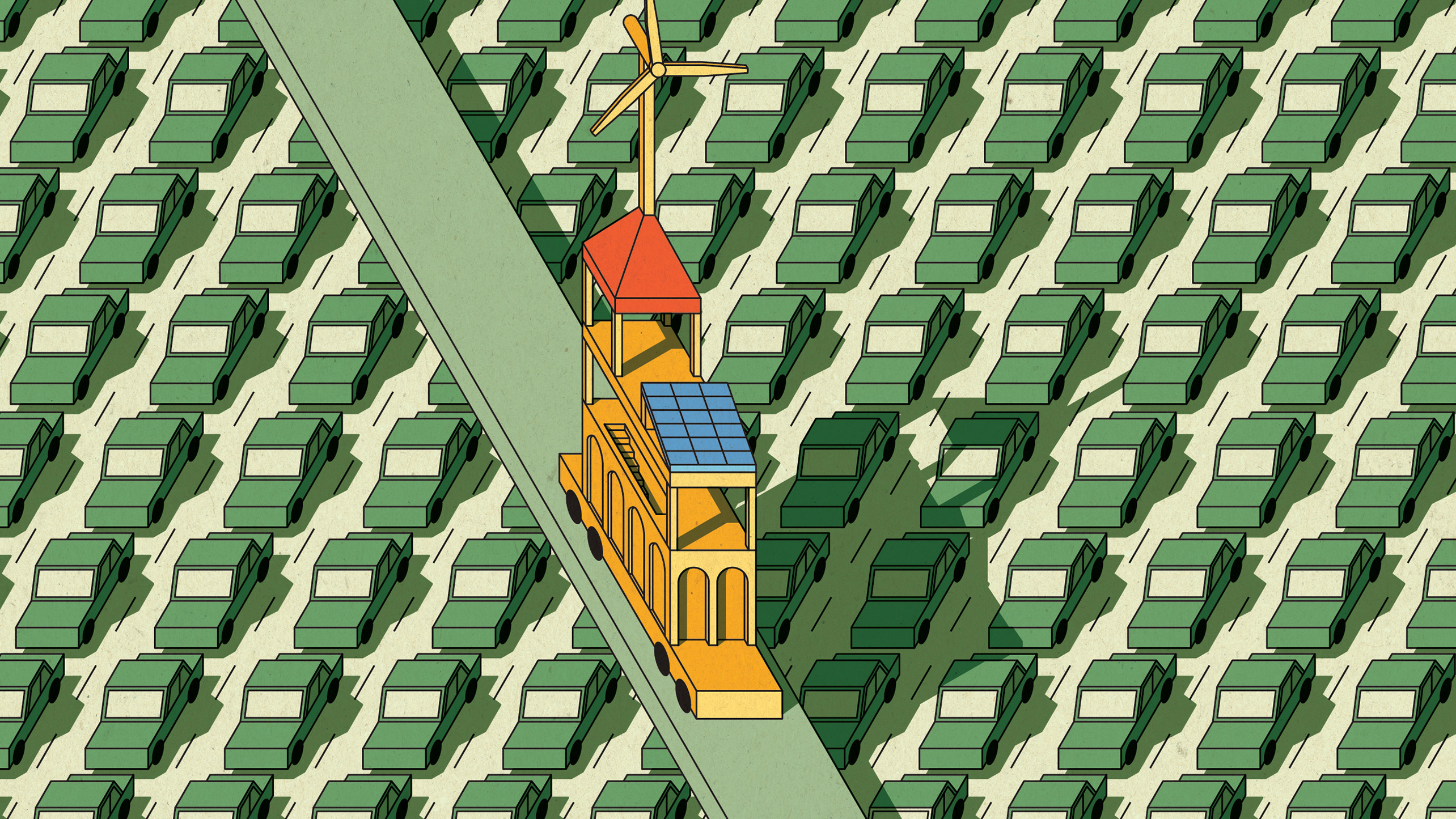
All your customers’ needs, under one roof
Ecosystem brands meet consumers' wants and exceed their expectations
For marketers, building brand ecosystems has somewhat different parameters than customary brand-building. The most effective ecosystems are defined not by costs and defending of market share but by revenues and creation of new markets altogether which better satisfy real, related human needs. Realising that expectation is reality, companies ranging from Lego to Google have deprioritised cheaper in a battle for better – better quality, convenience, speed, and relevance that translates to deeply connected and long-lasting relationships.
Ecosystem brands: a one-stop shop for customer needs
Brands have become smarter about expanding their reach through a set of coherent products and services. Some become lifestyle brands, centred on the attitudes and aspirations of their target audience. The most successful ones go to the next level – they become ecosystems, offering an interconnected set of services that enables users to fulfil a wide range of needs in one integrated experience.
Success stories are more easily found among top digital brands (three of the five most valuable brands in the world – Google, Microsoft, and Amazon – are ecosystems),1 but some notable offline-first leaders like Lego and Disney have secured their foothold in consumers’ hearts and lives through the power of ecosystems as well. Here, we explore the different ways in which a brand can expand beyond its initial remit to the benefit of consumers, marketers, and business value alike.
In short, ecosystem brands serve as one-stop-shops for multi-faceted consumer needs. These brands derive very real benefits from the network of connections and interactions they can create with their customers; provided that data is collected, integrated, and leveraged smartly, more touchpoints benefit, as does the consumer, in a benevolent feedback loop.
As such, Google, Apple and Amazon are “master” ecosystem brands: their platforms are not only of massive and global scale, but they also allow both merchants and consumers to interact with each other, creating and exchanging value across multiple dimensions of the customer experience and supply chain.
Not all brands can realistically cover such an extended relationship with their customers. But there is room for smaller, more-specialised ecosystem brands, particularly those products and services that are not online or digital by nature. Indeed, Lego and Disney have each leveraged technology and online elements to build their ecosystems, but the value they add to customers’ lives is largely derived from powerful offline interactions with products, services, stores, experiences, and even peer communities.
From brand extension to brand ecosystem: delineating the difference
Traditionally, brand extension consists of using the same brand name across a wide range of product categories. Europe’s easyGroup exemplifies brand extension, stretching the name from easyJet (the airline) through to easyHotel, easyOffice, easyCinema and even easyPizza. Office and cinema may have little to do with one another, but they reside under the same brand umbrella.
That, of course, is merely the process of putting a brand name on a product portfolio. Today, brands can leverage technology and data to create a holistic and coherent consumer experience across a variety of needs. Through this process, they become “ecosystem” brands.
The three building blocks of ecosystem brands: where products and markets fit
Silicon Valley’s holy grail is product/market fit. But in Silicon Valley and elsewhere, today’s winners – realising that there are so many products and limited markets – think about what they’re bringing to the world differently. For them, it’s about solution/need fit, where knowing your customers and their current needs, anticipating their future needs, and exceeding their expectations around fulfilling needs are the focus. It’s about solutions that serve, rather than products to be pushed. With an acute awareness of and fastidious focus on needs, success comes from meeting or exceeding them and reducing friction points – beyond whatever your immediate product offers. Through a combination of sensitivity, speed and agility, innovation stems from the world of opportunity – the ecosystem – around a singular need.
This evolved offering is much more than a brand extension (which often tackles the same need in a different way, as Colgate’s introduction of a toothbrush to complement its toothpaste did); instead, it addresses peripheral needs surrounding the core one, as Lego’s movies, incredible in-store experiences, amusement parks, videogames, and even social networks did around the world of play more broadly. This creates more numerous and more powerful synapses which not only forge stronger connections with consequently more satisfied customers, but also equip brands with critical insight and ammunition to continue feeding the flywheel.
Among the numerous competitive advantages that these brands exhibit, here are three that stand out:
1. Ecosystem brands excel at delivering personalisation
More knowledge about customers (especially on a per-customer basis) means greater familiarity with key audiences at each stage of the funnel, translating to deeper insight on who the audience is, what matters to them, where future needs may arise, and what gaps need to close to convert deflectors. Ecosystem brands collect a plethora of data across services, at a user level. With Amazon being the obvious example, they then model this data to personalise the customer experience and, subsequently, anticipate the user’s needs, optimise the timeliness and effectiveness of their marketing, upsell companion products, and address user pain points in problem areas. Winning brands further leverage this multi-faceted view of their customers to constantly refine the personalisation of the experience, better anticipate future trends, and inform their product innovation efforts.
2. Ecosystem brands foster long-term loyalty
Ecosystems appeal to the head, heart, and hands to create solutions for real wants and needs; they craft experiences which not only live up to standards set by other categories and companies, but also seamlessly integrate into lives and become objects of desire. They could be thought of as the major brand equivalent of popping into your local bakery. It is not a channel: it’s a personal, emotional and rewarding interaction with your local baker, who knows what you want before you even ask for it; its antithesis is a cold, mission-accomplished, unfulfilling mass-produced dessert from the nearest grocer that requires you to forage through the freezer case. The dialogue between an ecosystem brand and its consumers is therefore more authentic, because it’s rooted in delivering real value to the human rather than merely chasing a share of his wallet. Ecosystem brands also develop system-wide loyalty programmes that are more rewarding for members and enable the ecosystem to easily unify the data it collects. For example, even as Virgin has always been about brand extensions, its Virgin Red loyalty program personalises its member experience based on data gathered from the media you consume (Virgin Media), your workout (Virgin Active), the trains you ride (Virgin Trains) and how you pay (Virgin Money).
3. Ecosystem brands enjoy greater return on ad spend than any other brands
In an ecosystem, the advertising deployed to promote one service indirectly benefits all the others. Indeed, BrandZ data validates that among the top ecosystem brands, marketing communications perform significantly better than those of non-ecosystem brands. When Microsoft advertises its Surface product, the campaign also drives awareness for its Office 365 brand and equity for its Microsoft master brand. Ecosystem brands can measure and optimise the impact of each campaign towards each product, brand and master brand. They can also measure the cumulative effect of different campaigns and optimise the sequencing of these campaigns and their components (media channels, publishers, creatives…) to maximise return on ad spend.
In summary: ecosystems are the new era of brand-building
With the inundation of options available, the winning formula is now less about what brands offer, and more about the customer centricity (the human) and market responsiveness (their reality) surrounding that core offering. As such, for innovative brands, ecosystem-driven growth is the new era of brand-building.
Whether it’s Lego or Disney extending the meaning of play and imagination or Apple and Microsoft leveraging digital platforms to transform entire industries, an ecosystem approach offers multiple keys into the castle of consumer loyalty – and therefore brand and business growth.
|
Read more from Atticus Journal Volume 25
This is an excerpt from From Lego to Apple: The new era of brand building is ecosystem-driven growth 75 KB
published on
10 November 2020
Category
More in The Atticus Journal

Generative AI: mitigating risk to unlock opportunity
H+K’s Allison Spray on managing the commercial and reputational risks that the proliferation of generative AI will present

Making sustainability profitable
Sustainability investments must deliver returns – both financial and reputational – to be ‘sustainable’ for business. Something needs to change, says Luc Speisser

Sustainability comms must get real
There’s a disconnect between the way corporations talk about climate change and how the public discusses the same issue. That’s the conclusion of research by Jamie Hamill, Alessia Calcabrini and Alex Kibblewhite.

